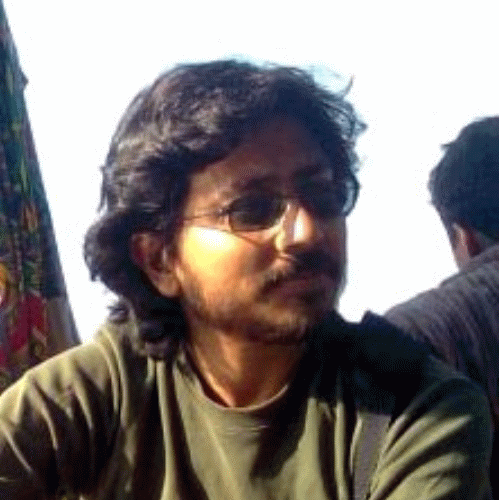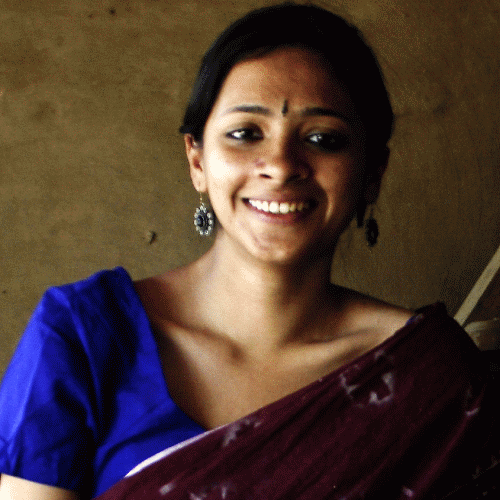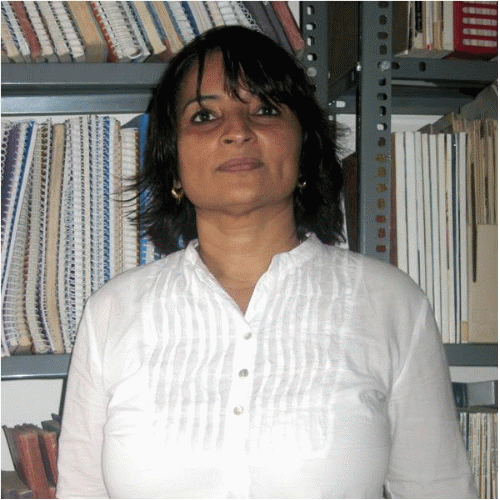
 Abeer Gupta is an alumnus of the National Institute of Design, India, and Goldsmiths College, University of London, where he studied visual anthropology. He has directed several short documentary films and executive produced Siddharth, the prisoner, which received the Critic’s Choice Award at the 2nd Asia Pacific Screen Awards (APSA), Gold Coast, Australia, 2008 and the Best Actor Award for Rajat Kapoor at 10th Osian’s-Cinefan Festival of Asian and Arab Cinema, New Delhi, 2008. He is currently based in Srinagar, Jammu & Kashmir, and is involved in research on visual and material cultures of the Tibetan Himalayas.
Abeer Gupta is an alumnus of the National Institute of Design, India, and Goldsmiths College, University of London, where he studied visual anthropology. He has directed several short documentary films and executive produced Siddharth, the prisoner, which received the Critic’s Choice Award at the 2nd Asia Pacific Screen Awards (APSA), Gold Coast, Australia, 2008 and the Best Actor Award for Rajat Kapoor at 10th Osian’s-Cinefan Festival of Asian and Arab Cinema, New Delhi, 2008. He is currently based in Srinagar, Jammu & Kashmir, and is involved in research on visual and material cultures of the Tibetan Himalayas.
Project Title - "The culture of Islam in the Western Himalayas"
 Amit Madheshiya , a graduate in English Literature from Hindu College, New Delhi, is a now Mumbai-based photographer pursuing long-term documentary projects. His work on the Nomadic Cinemas has recieved recognition at the World Photography Award in Cannes, and the Grand Prize at the Humanity Photo Awards in China. For his work on migrant children in metropolitan cities, he has won awards from the Commonwealth, recently, the National Media Fellowship from National Foundation for India and was nominated for UNICEF Photo of the Year. He also writes for Himal South Asian magazine.
Amit Madheshiya , a graduate in English Literature from Hindu College, New Delhi, is a now Mumbai-based photographer pursuing long-term documentary projects. His work on the Nomadic Cinemas has recieved recognition at the World Photography Award in Cannes, and the Grand Prize at the Humanity Photo Awards in China. For his work on migrant children in metropolitan cities, he has won awards from the Commonwealth, recently, the National Media Fellowship from National Foundation for India and was nominated for UNICEF Photo of the Year. He also writes for Himal South Asian magazine.
 Shirley Abraham is a researcher and documentary film-maker based in Mumbai. She graduated in Journalism from Lady Shri Ram College, Delhi. Shirley has worked on content production with BBC Radio IV, Adlabs, Reliance Media and Fox Television Studios, India. She has scripted and directed episodes for Kiran (a ray of hope) - a non fiction daily for Doordarshan, chronicling individual and community initiatives driving social change. Together, Amit and Shirley have received the Arts Research and Documentation Grant from India Foundation for the Arts, for their work on the traveling tent cinemas of Maharashtra. For the project, they also received a short term fellowship from the Cluster of Excellence at Heidelberg University (2010) and were also selected for the Goethe-Institute / Max Mueller Bhavan 50 Year Anniversary Grant Programme for 2010-11. Both completed their M.A from the Mass Communication Research Centre at New Delhi’s Jamia Millia Islamia University in 2006. For Tasveerghar, they wrote the visual essay Tiled Gods Appear on Mumbai's Streets in 2009.
Shirley Abraham is a researcher and documentary film-maker based in Mumbai. She graduated in Journalism from Lady Shri Ram College, Delhi. Shirley has worked on content production with BBC Radio IV, Adlabs, Reliance Media and Fox Television Studios, India. She has scripted and directed episodes for Kiran (a ray of hope) - a non fiction daily for Doordarshan, chronicling individual and community initiatives driving social change. Together, Amit and Shirley have received the Arts Research and Documentation Grant from India Foundation for the Arts, for their work on the traveling tent cinemas of Maharashtra. For the project, they also received a short term fellowship from the Cluster of Excellence at Heidelberg University (2010) and were also selected for the Goethe-Institute / Max Mueller Bhavan 50 Year Anniversary Grant Programme for 2010-11. Both completed their M.A from the Mass Communication Research Centre at New Delhi’s Jamia Millia Islamia University in 2006. For Tasveerghar, they wrote the visual essay Tiled Gods Appear on Mumbai's Streets in 2009.
Project Title - "Chasing the original image: An exploration of devotional visual culture at the shrine of Sailani Baba"
 Dr. Annapurna Garimella is a designer and an art historian who focuses on the art and architecture of India and is based in Bangalore, India. Annapurna heads Jackfruit, a research and design organization. Under her leadership, Jackfruit has developed a specialized portfolio of design and curatorial projects for artists, museums, government and private organizations and non-profits. She is also founder of Art, Resources and Teaching Trust, a not-for-profit organization that gathers resources and promotes research and teaching in art and architectural history, archaeology, crafts, design, and other related disciplines in academic and non-academic fora. She was the former Research Editor and Advisory Board Member for Marg Publications and is currently on the board of the S N School of Art and Communication, University of Hyderabad and the Faculty of Arts and Humanities at CEPT in Ahmedabad.
Dr. Annapurna Garimella is a designer and an art historian who focuses on the art and architecture of India and is based in Bangalore, India. Annapurna heads Jackfruit, a research and design organization. Under her leadership, Jackfruit has developed a specialized portfolio of design and curatorial projects for artists, museums, government and private organizations and non-profits. She is also founder of Art, Resources and Teaching Trust, a not-for-profit organization that gathers resources and promotes research and teaching in art and architectural history, archaeology, crafts, design, and other related disciplines in academic and non-academic fora. She was the former Research Editor and Advisory Board Member for Marg Publications and is currently on the board of the S N School of Art and Communication, University of Hyderabad and the Faculty of Arts and Humanities at CEPT in Ahmedabad.
Annapurna has written several essays on contemporary art and edited and contributed to two volumes, Shaping the Indian Modern on the work of Mulk Raj Anand and along with Bhanu Padamsee, Akbar Padamsee: Work in Language. Annapurna also is curating with her colleagues at Jackfruit a major exhibition scheduled to open this year in November at Devi Art Foundation titled “Vernacular, in the Contemporary”. She also is preparing two essays for a volume edited by Parul Dave Mukherjee and Rakhee Balaram on contemporary sculpture and craft in contemporary art. She is also preparing her PhD dissertation on jirnoddhara or architectural renovation in early Vijayanagara architecture and a book on the politics of tourism, heritage and design. In February 2008, Tasveerghar already published another essay by Annapurna: Miniature Societies and Grihani Aesthetics
Fiza Ishaq has a Masters in Cross-Cultural Psychology. She has been working with Art, Resources and Teaching Trust (A.R.T.) as researcher since 2009. Her research interests include anthropology, art history, the concept of culture, migration and diasporas, tranculturation, material and visual culture, cultural politics and cultural heritage, class, gender and Islam in South Asia.
Project Title - "Shia devotional art and material culture:
Visual narratives of transculturation, social memory and community identity"
Noman Baig is a PhD student of anthropology in University of Texas (Austin). His research interests are ethnographic writing, urban visual anthropology, Post-colonial theory, Continental Philosophy, and post-structuralism. His primary geographical area of research is South Asia focusing particularly on cities. Currently he is working on marketplaces in Karachi investigating commercial spaces through the contemporary lenses such as anthropology of senses and Science and Technology Studies (STS). Noman holds B.A and M.A in political science. He is also learning Deutsch.
Project Title - "Mediating Belief and Senses: Dawat-e-Islami' Emerging Madina of Visuality"
 Yogesh Snehi is an Assistant Professor in History at DAV College, Amritsar. He has worked on areas such as conjugality, gender and social reform, development and literacy movements. His interest in social history has enabled his contribution to an understanding of popular culture and sufi shrines (dargahs) in Punjab and situate them within the debates on communalism and identity formation in Modern India.
Yogesh Snehi is an Assistant Professor in History at DAV College, Amritsar. He has worked on areas such as conjugality, gender and social reform, development and literacy movements. His interest in social history has enabled his contribution to an understanding of popular culture and sufi shrines (dargahs) in Punjab and situate them within the debates on communalism and identity formation in Modern India.
Project Title - "Replicating Memory, Creating Images: Pirs and Dargahs in popular art and media of contemporary East Punjab"
 Tasveer Ghar: A Digital Archive of South Asian Popular Visual Culture
Tasveer Ghar: A Digital Archive of South Asian Popular Visual Culture